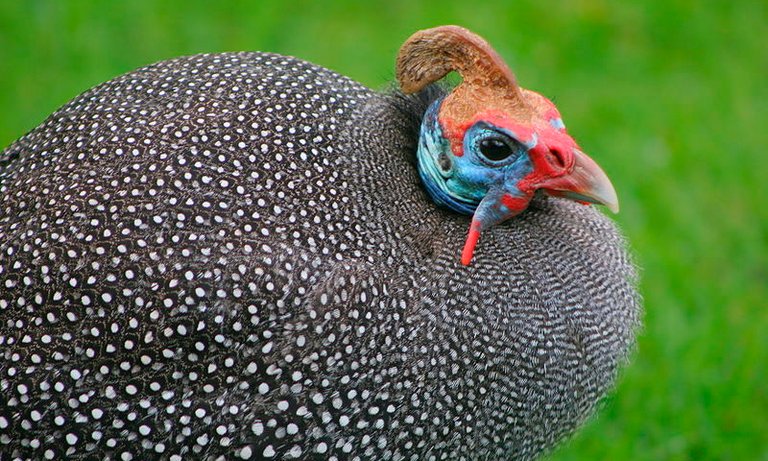
My maternal grandmother lives in a town in Anzoátegui state (Venezuela), called Mundo Nuevo. She breeds ducks, chickens, turkeys, and particularly has a pair of guineos with 5 young, of all their animals, these are the ones that take care of because this type of hen is not very common in the town.
Domestic guineafowl, sometimes called pintades or gleanies, are poultry originating from Africa. They are the domesticated form of the helmeted guineafowl (Numida meleagris) and are related to other game birds such as the pheasants, turkeys and partridges. Although the timing of their domestication is unknown, there is evidence that domestic guineafowl were present in Greece by the 5th century BC.
They lay 25–30 eggs in a deep, tapering nest. Their eggs are small, dark and extremely thick-shelled. The hens have a habit of hiding their nests, and sharing it with other hens until large numbers of eggs have accumulated. The incubation period is 26–28 days, and the chicks are called "keets". As keets, they are highly susceptible to dampness (they are indigenous to the more arid regions of Africa) and can die from following the mother through dewy grass. After their first two to six weeks of growth, though, they can be some of the hardiest domestic land fowl.

As domestics, guineafowl are valuable pest controllers, eating many insects. They are especially beneficial in controlling the Lyme disease-carrying deer tick, as well as wasp nests. While they are rarely kept in large numbers, a few are sometimes kept with other fowl to be used as a security system against birds of prey. They will call with their loud, high shrieking voices if concerned about intruders. They are highly social birds and tend to languish when alone.

Within the domesticated species, many color variations have been bred forth aside from the "pearl" or natural color of the helmeted guinea. These include white, purple, slate, chocolate, lavender, coral blue, bronze, pewter, buff dundotte, blonde, and various pieds.
It can be cooked using any recipe that calls for chicken, but is considered to be more flavorful and, because of its higher cost, is generally served at special occasions. It is particularly common in French and Italian recipes.
Source of the information: https://en.wikipedia.org/wiki/Domestic_guineafowl
Hi! I am a robot. I just upvoted you! I found similar content that readers might be interested in:
https://en.wikipedia.org/wiki/Domesticated_guineafowl